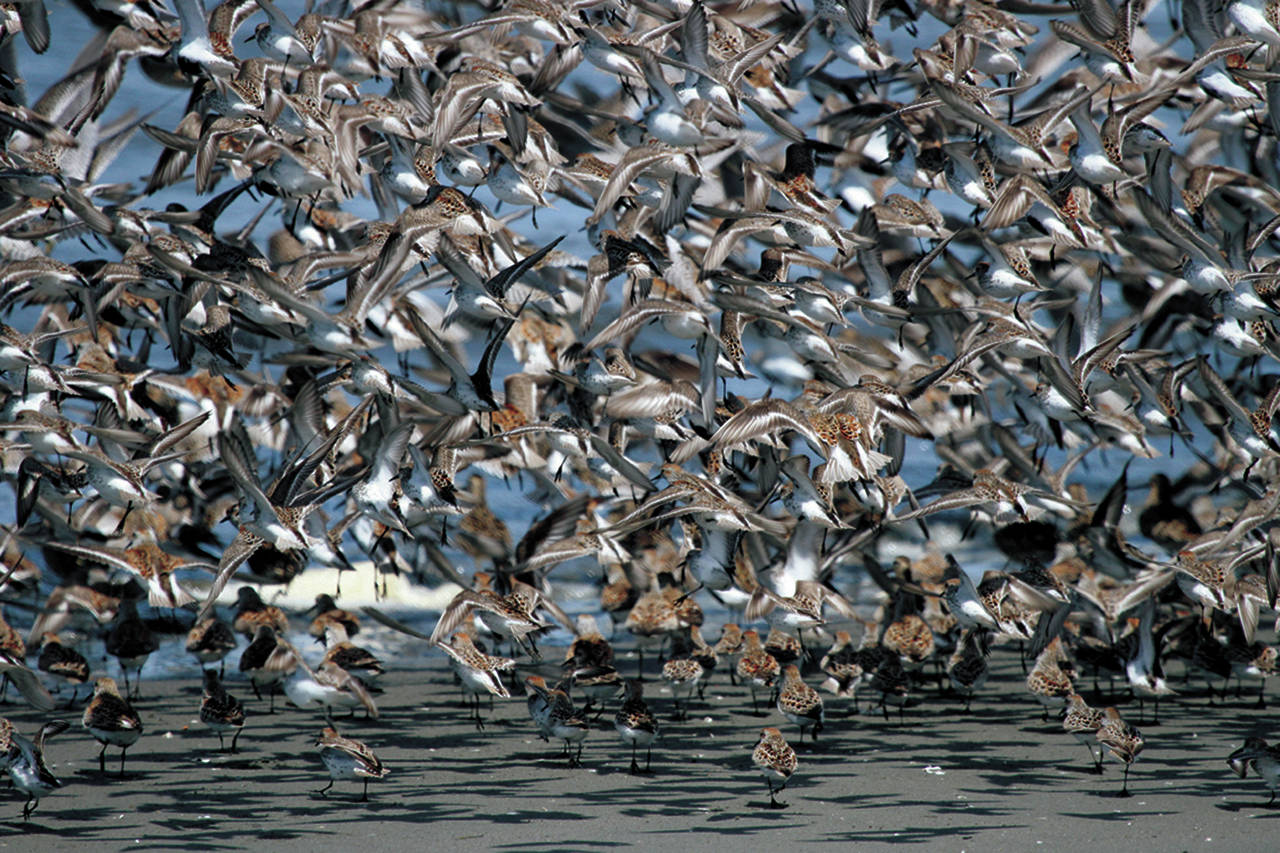By Scott D. Johnston
It’s the stuff storytellers salivate over: an epic quest for survival that stretches the length of continents.
This weekend, the 22nd annual Grays Harbor Shorebird and Nature Festival will present an opportunity to experience the annual migration of hundreds of thousands of shorebirds as they rest and refuel on the beaches and intertidal flats of Grays Harbor.
Over the years, the festival has evolved into a multifaceted event that brings as many as 2,000 visitors from as far away as Florida and Maine. Most of the activities are based at the Grays Harbor National Wildlife Refuge (adjacent to the Bowerman Field airport) and at the nearby Hoquiam High School.
The Shorebird Festival was started by the Grays Harbor Audubon Society and is supported by the Nisqually National Wildlife Refuge Complex (of which the Grays Harbor Refuge is a part) and the city of Hoquiam.
Related activities include lectures, free family events, a student poster contest and the birding marketplace, all at the high school; field trips to North Beach and South Beach coastal viewing areas; and the “Run for the Birds” Saturday at Hoquiam City Hall, which includes a 2-mile walk/run as well as 5K and 10K runs.
The keynote speaker at Friday’s dinner at the high school is award-winning wildlife photographer Tim Boyer. Other lecture topics during the weekend are “Shorebird Identification Basics,” “Antarctica: Past, Present and Penguins” and “The Peregrine Falcon: Hunter and Scavenger.”
But the birds themselves are the main attraction, and there will be plenty of viewing opportunities.
“The Grays Harbor National Wildlife Refuge was established primarily to protect habitat for migratory shorebirds,” said Glynnis Nakai, manager of the Nisqually Refuge.
The intertidal mudflats that are revealed when the tide goes out are a prime feeding area for 15 to 20 bird species during their migration from South America to their breeding grounds in Alaska.
The Refuge’s Sandpiper Trail is a mile-long boardwalk that leads to a large viewing area for the mudflats. During peak times, volunteers with scopes will be available to help answer questions. Shorebirds can be viewed best there from about three hours before to three hours after high tide. That means approximately 7 a.m. to 1 p.m. Friday, 8 a.m. to 2 p.m. Saturday and 9 a.m. to 3 p.m. Sunday.
Arnie Martin, president of the Grays Harbor Audubon Society, said the field trips to coastal viewing areas are his favorite element of the festival, and he enjoys coordinating the itineraries and recruiting guides each year. He’s been involved with the event since 2007.
Field trips originate in Hoquiam, last 6 to 8 hours, and cost $35 to $45. There will be two Friday trips: one to Tokeland, Grayland and Westport, and the other to Ocean Shores. On Saturday, guides will escort birdwatchers to Ocean Shores and Huynisisoos (formerly known as Pt. Grenville); and on Sunday, a group will go to Westport.
The festival also includes a chance to hear citizen science leader Julia Parrish, professor of ocean fishery sciences and associate dean of the College of the Environment at the University of Washington. In 1999, she created the Coastal Observation and Seabird Survey Team, which started with five beaches in southern Washington, including the North Coast area of Grays Harbor County. Since then, COASST has grown to 800 volunteers working on nearly 450 beaches in Northern California, Oregon, Washington and Alaska.
Parrish will speak at the Saturday dinner at the Hoquiam Elks Lodge. Tickets are $25, which covers a social hour at 5:30 p.m., dinner by O’Brien’s Catering at 6:30 and the lecture at 7:30.


